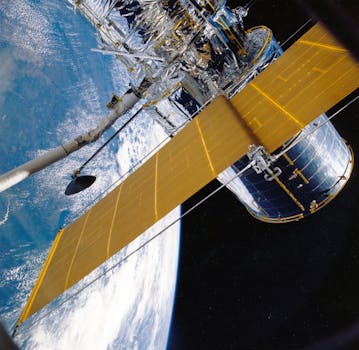
Navigating the Skies: Insights into Recent Satellite Telecommunications Innovations
The world of satellite telecommunications has undergone significant transformations in recent years, driven by technological advancements and increasing demand for global connectivity. As we continue to push the boundaries of what is possible, it is essential to understand the latest innovations and their implications for the industry. In this article, we will delve into the recent developments in satellite telecommunications, highlighting key trends, challenges, and opportunities.
Satellite telecommunications have come a long way since the launch of the first commercial satellite, Intelsat 1, in 1965. Today, satellites play a vital role in providing broadband internet, mobile connectivity, and navigation services to millions of people around the world. The recent surge in satellite launches has led to an unprecedented increase in satellite constellations, with companies like SpaceX, Amazon, and OneWeb deploying thousands of satellites in low Earth orbit (LEO).
Advances in Satellite Technology
One of the most significant innovations in satellite telecommunications is the development of high-throughput satellites (HTS). HTS satellites are designed to provide higher bandwidth and faster data transfer rates, making them ideal for applications such as broadband internet, video streaming, and cloud computing. The use of HTS satellites has enabled satellite operators to offer more competitive pricing and improved services, bridging the digital divide in remote and underserved areas.
Another area of innovation is the use of advanced materials and manufacturing techniques, such as 3D printing and modular design. These technologies have enabled the production of smaller, lighter, and more efficient satellites, reducing launch costs and increasing the payload capacity of launch vehicles. The development of electric propulsion systems has also improved the maneuverability and lifespan of satellites, allowing them to maintain their position and operate for longer periods.
Impact on the Industry
The recent innovations in satellite telecommunications have far-reaching implications for the industry. The increased availability of satellite capacity has led to a surge in demand for satellite-based services, driving growth in the market. The use of HTS satellites has also enabled the development of new applications, such as satellite-based 5G networks and IoT services.
However, the increasing number of satellites in orbit has also raised concerns about space debris and congestion. The risk of collisions and interference between satellites has become a major issue, highlighting the need for sustainable and responsible satellite operations. Regulatory bodies, such as the Federal Communications Commission (FCC) and the International Telecommunication Union (ITU), are working to establish guidelines and standards for the safe and efficient use of satellite technology.
Challenges and Opportunities
Despite the many innovations and advances in satellite telecommunications, there are still significant challenges to be addressed. One of the major hurdles is the issue of latency, which can be a significant problem for real-time applications such as video conferencing and online gaming. The development of new technologies, such as laser communication systems and quantum encryption, is expected to help mitigate this issue and provide more secure and reliable connections.
The growing demand for satellite-based services has also created new opportunities for investment and collaboration. The satellite industry is expected to continue growing, with estimates suggesting that the global satellite market will reach $1 trillion by 2025. As the industry expands, we can expect to see new partnerships and innovations emerge, driving further growth and development in the years to come.



